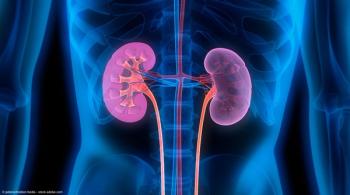
- Vol. 47 No. 2
- Volume 47
- Issue 2
Endoscopic robotic platforms: What the future holds
This article highlights some of the emerging endoscopic robotic systems in urology.
Once its first documented use in the early 1800s, endoscopy has evolved to be an essential part of the urologist’s toolkit. The subsequent century saw multiple engineering and clinical use advances that led to the evolution of modern endoscopes. These changes have revolutionized the way clinicians diagnose and treat a variety of urologic pathologies. Combined with an increased interest and accessibility of surgical robots, multiple novel endoscopic robotic platforms are being developed to potentially improve outcomes, ease performance and learning challenges, and improve surgical ergonomics.
This article highlights some of the emerging endoscopic robotic systems in urology.
Current challenges of endoscopic surgery
Despite being fundamental to the diagnosis and treatment of many urologic diseases, some challenges exist during endoscopic surgeries. Adequate visibility stands as a central pillar of endoscopy. Although fiberoptic scopes have improved significantly since their first documented use in the 1960s, their “honeycomb”-like image, as well as fiber deterioration over time, can lead to impaired visibility. Camera systems have continued to evolve, incorporating advances in image capture and display.
Also see:
Recent advances have favored imaging chips at the scope tip over traditional fiberoptic bundles. Though digital scopes provide a clearer image, the imaging chip requires a larger scope tip, with most being 7.7F to 9.7F. This increase in size in flexible scopes, however, exemplifies another challenge of endoscopic surgery: endoscopic accessibility. The caliber of the working instrument, the number of previous scope usages, and the patient’s upper tract anatomy can complicate maneuverability during flexible ureteroscopy. In the lower urinary tract, anatomic variability (ie, capacious bladders or significant intravesical lobes) can impede routine cystoscopic evaluations or transurethral procedures.
These factors, which can affect endoscopic accessibility and the time length of increasingly complex procedures, highlight another challenge of endoscopic surgery: surgeon ergonomics. Factors leading to surgeon fatigue and potential injury are multifactorial, variable, and dependent on the procedure being performed. However, they are further compounded by decreased visibility and maneuverability when performing endoscopic cases, increasing surgeon discomfort, and decreasing intraoperative efficiency, likely impacting physician dexterity over time. Though surgical experience can certainly help overcome difficulties when performing endoscopic procedures, new endoscopic robotic systems attempt to improve on these challenges.
Next:
Urologists developed the first transurethral robotic system to perform transurethral resection of the prostate in the 1980s, but this did not meet with commercial development
Read:
Noting some of resource and time limitations of bladder cancer surveillance, Soper et al developed an automated, ultrathin scanning-fiber endoscope of small diameter (1.5 mm) for bladder cancer surveillance. The system allows for machine-controlled surveillance and uses a spiral cam motion to map the entire surface of the bladder, which they demonstrated ex vivo in a pig bladder
More recently, our engineering-based research team at Vanderbilt has been developing a transurethral robot platform (ie, TURBot) for bladder tumor resection
The technology has successfully been evaluated in vivo in porcine experiments. Though en bloc tumor laser resection was achieved in these models, it was complicated by lack of depth perception and limited degrees of freedom of the working components (figure 2). Current efforts are aimed at improving these limitations in future prototype systems.
An additional rigid endoscopic system using bendable, concentric tube robotic platform tools is being developed to perform prostate and endoscopic surgery including holmium laser enucleation of the prostate (HoLEP)
The platform has shown to have 65% improvement in accessible areas compared to rigid endoscopes in simulations and has successfully been demonstrated in a cadaveric model. The potential of complex surgical maneuvers including retraction and enhanced tissue manipulation is part of the ongoing development of this system.
Next:
Several investigational robotic flexible endoscopic systems have been developed with the intention to potentially treat urolithiasis and perform upper tract endoscopy. The initial foray into robotic control was use of the Sensei and the Magellan systems by Hansen Medical. These systems utilized robotically controlled catheters that were actively manipulated to passively maneuver the shaft of the ureteroscope. The passive manipulation of the scope lead to limited maneuverability in the upper tract, however
The Avicenna Roboflex system from ELMED Medical Systems has been developed and clinically evaluated since 2010. The system comprises multiple features, including a finely tuned robotic platform designed to control insertion, rotation, and flexion of a standard ureteroscope in the field. The system has a surgeon control console where the surgeon is seated outside of the radiation field and allows for adjustment of seat and arm height for comfort. The console adds a touch screen-activated irrigation pump, touch screen laser-fiber control, and pedals to control fluoroscopy; laser activation is integrated into the system.
Also see -
Currently, any commercially available ureteroscope can be used with the Avicenna Roboflex, as well as any laser type. There is, however, no integration of a basket or grasper, although these can be controlled by a bedside assistant. Multiple clinical studies have evaluated the system in Europe. Most recently, a multicenter phase II study was performed by Klein et al (J Urol 2016; 195[suppl]:e406-7 [abs. PD18-08]). The group was able to demonstrate the safety and efficacy of the platform in 266 patients with a mean stone size of 1.4 cm. They were able to successfully perform fragmentation, dusting, and extraction of stone fragments. Total operative time was 96 minutes, with mean console and robotic docking times of 65 minutes and 4 minutes, respectively. FDA approval of the device is still pending.
Conclusions
The field of urology has been at the forefront of the scientific evolution of surgical robotics and minimally invasive surgery. Novel endoscopic robotic systems open the door for a new set of diagnostic and therapeutic possibilities to offer patients. Further studies on improvements in patient and disease outcomes, as well as cost considerations, will ultimately drive how these robotic systems are integrated into clinical practice.
Nicholas L. Kavoussi, MD
S. Duke Herrell, MD
Dr. Kavoussi is a minimally invasive surgery fellow and Dr. Herrell is professor of urology, Vanderbilt University Medical Center, Nashville, TN. Disclosure: Dr. Herrell is founder and a board member of, and owns stock in, Virtuoso Surgical; and receives grant funding from CSATS, BTG, and NIH.
Section Editor James M. Hotaling, MD, MS
Section Editor Steven A. Kaplan, MD
Articles in this issue
almost 7 years ago
APPs play multifaceted role as urology team membersalmost 7 years ago
Undetected kidney tumor leads to lawsuitalmost 7 years ago
75% of urologic surgery patients have unused opioidsalmost 7 years ago
High-risk prostate Ca: New study sheds light on RP vs. RTalmost 7 years ago
Gender disparities in bladder cancer managementalmost 7 years ago
Some urology RVUs do not track with complexity, outcomesalmost 7 years ago
Findings question validity of large PCa trialalmost 7 years ago
How to get reimbursed when using –22 modifieralmost 7 years ago
Cybersecurity: How to safeguard your practice against threatsalmost 7 years ago
2019 ‘to-do list’: Reduce debt, contribute to retirement plansNewsletter
Stay current with the latest urology news and practice-changing insights — sign up now for the essential updates every urologist needs.


















